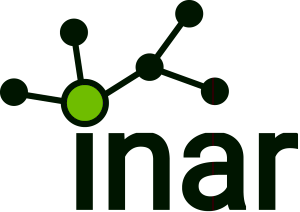Print is dead? Long live print! “The radical upheaval in the printing industry is far from over,” emphasizes Oliver Kutsch, CEO of Ceresana: “Conventional advertising brochures, catalogs, and publication printing are continuing to lose importance, while the market for printed books is stabilizing somewhat for the time being. In contrast, demand for packaging, labels, and other print products is increasing.” The latest, already fifth edition of the Ceresana study on the global market for printing inks forecasts that the total demand for printing inks will grow by an average of 1.0% annually until 2033. However, there are huge differences between the various countries, application areas, and printing processes.
Packaging Increases Demand for Printing Inks
For the first time, the current market report details the demand for printing inks split by application area for each printing process such as offset, flexo, and inkjet. The information is presented in clearly structured tables. The booming online trade with its packaging made of flexible plastics and corrugated cardboard is particularly responsible for the growth of the printing ink market. In China, for example, flexible plastic bags are often used as packaging for shipments. In addition to stand-up pouches, growing segments currently include shrink labels, aseptic packaging, beverage packaging, and specially coated packaging paper. The printing industry is benefiting from ever stricter labeling requirements. However, the packaging market is very heterogeneous. In the printing ink market study, country-specific particularities are therefore outlined in individual country profiles for the most important countries.
Trend Towards Digital Printing and Organic Printing Inks
Digital printing processes are becoming competitive in more and more areas, starting with short print runs such as packaging and label printing, photo books, and other job printing. UV inkjet printing enables direct printing of 3D objects, for example. Accordingly, demand for inkjet printing inks and laser toners continues to rise noticeably. Ceresana’s current market overview provides specific figures on the individual printing ink types, for example on the demand for inkjet printing inks in the label printing segment, which is expected to grow by more than 10% per year worldwide. The use of energy-saving and more environmentally friendly printing processes is increasing significantly. Eco-friendly printing inks do not release any toxic heavy metals. Organic color pigments do not yet offer a convincing alternative to mineral oil products. However, the binding agents and solvents used in organic printing inks are already based on vegetable oils, i.e. renewable raw materials. A reduced mineral oil content in printing inks is not only beneficial for recycling or composting paper packaging.
Current Edition of the Market Study “Printing Inks – World”:
Chapter 1 provides all important key figures for the global market for printing inks, including forecasts up to 2033: For each region of the world, data on production, import, export, demand, and revenues are given. Revenues are given in billion US dollars and billion euros, all other figures are given in 1,000 tonnes. The demand for printing inks is broken down by relevant subcategories; for the first time, the various application areas, printing processes, and packaging types are not only analyzed separately, but also combined.
The revenues generated with and the demand for printing inks are both broken down into 7 application areas: Books, Magazines, Newspaper, Advertising and catalogs, Labels, Packaging, other applications.
The demand for printing inks is further split by 8 printing processes (Heatset and Coldset web offset, Sheetfed offset, Flexo, Gravure, other analog printing, Inkjet and Electrophotography), split by printing ink type (Oil-, Water- and Solvent-based, Radiation-curing, Toner and other printing inks), split by packaging type (Rigid and flexible plastic packaging, Packaging papers, Folding cartons, Corrugated board packaging and other packaging).
In this edition of the market study, the demand for printing inks in each of the seven application areas mentioned is shown separately for all eight printing processes for the first time. This makes it possible to immediately identify e.g. the demand for printing inks for flexographic printing in the “labels” segment or for heat-set web offset in the “advertising and catalogs” segment.
In Chapter 2, the 17 most important national markets are examined in detail. For each country, comprehensive data on production, import, export, demand, and revenues are given. The demand is subdivided according to application areas, printing processes, and printing ink types. In addition, the demand per printing process is split by the individual application areas (e.g. demand for inkjet printing inks in the “labels” segment). Furthermore, this 5th edition of the study also breaks down revenues by application for the first time.
Chapter 3 provides company profiles of the most important manufacturers of printing inks – clearly arranged according to contact details, revenues, net income, product range, production sites, and profile summary. In-depth profiles of 56 printing ink producers are given, for example of artience Co., Ltd., DIC Corporation, Flint Group, Sakata INX Corporation, Siegwerk Druckfarben AG & Co. KGaA, and hubergroup.
Further information on the new 5th edition of the market study “Printing Inks – World”: https://ceresana.com/en/produkt/printing-inks-market-report-world

About Ceresana
As one of the world’s leading market research institutes, Ceresana specializes in the chemicals, plastics, packaging, and industrial goods sectors. Special focus areas are bio-economy and automotive / mobility. Companies have been benefiting from our high-quality industry analyses and forecasts since 2002. More than 250 market studies provide more than 10,000 customers around the world with the knowledge base for their sustainable success.
More about Ceresana at www.ceresana.com
Ceresana
Mainaustrasse 34
78464 Konstanz
Germany
Press Contact: Martin Ebner, m.ebner@ceresana.com
